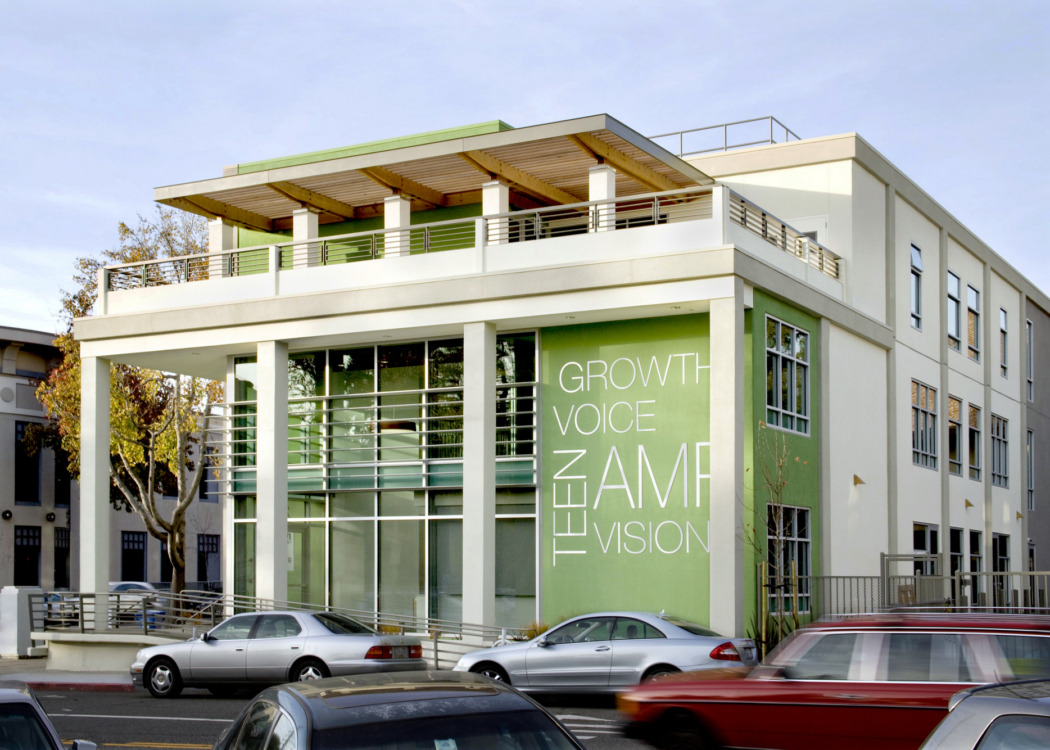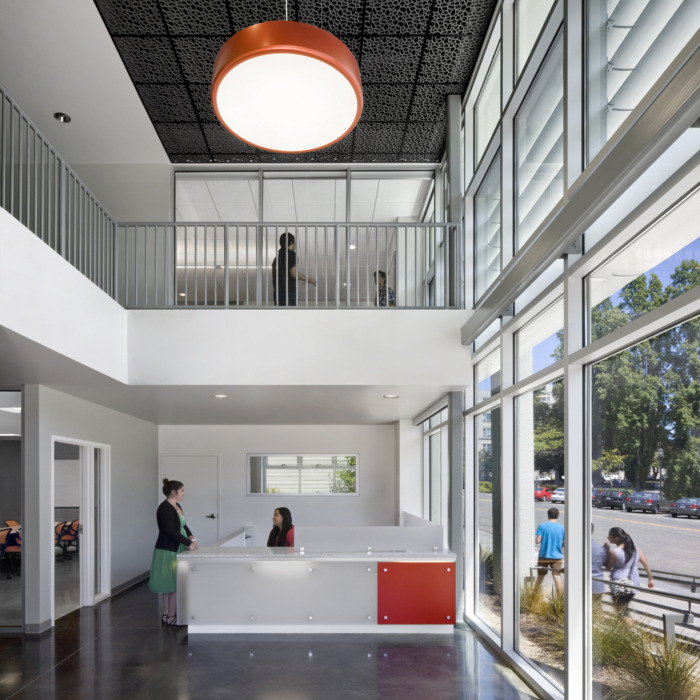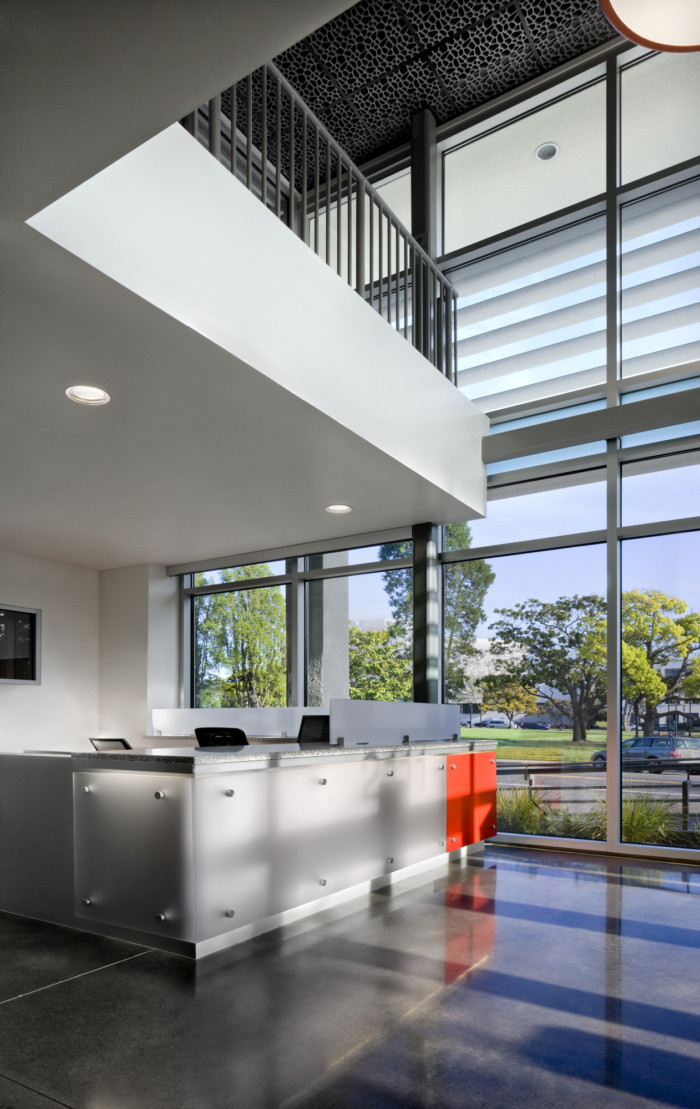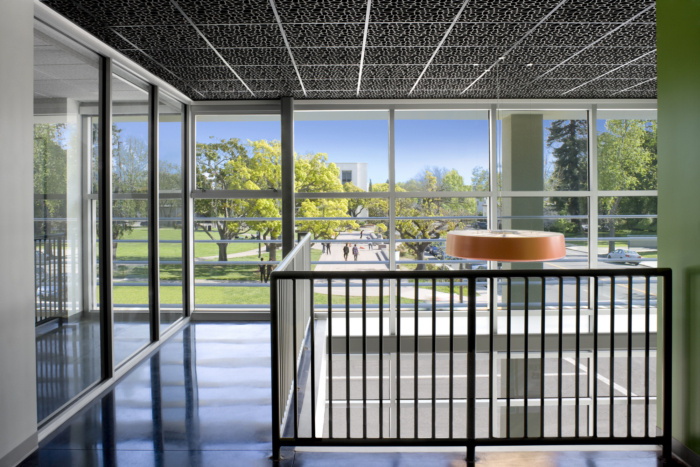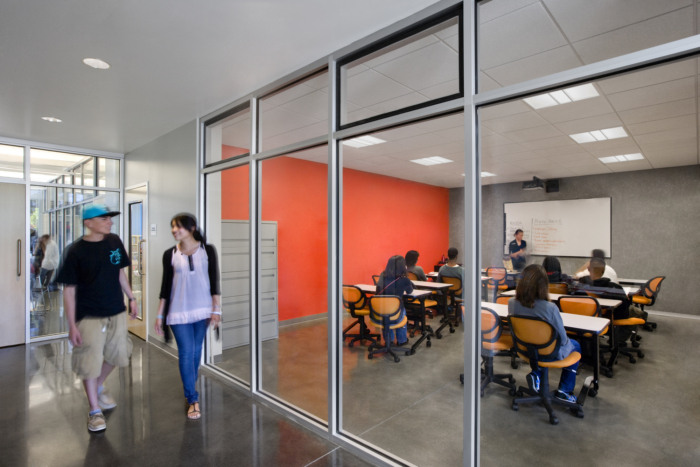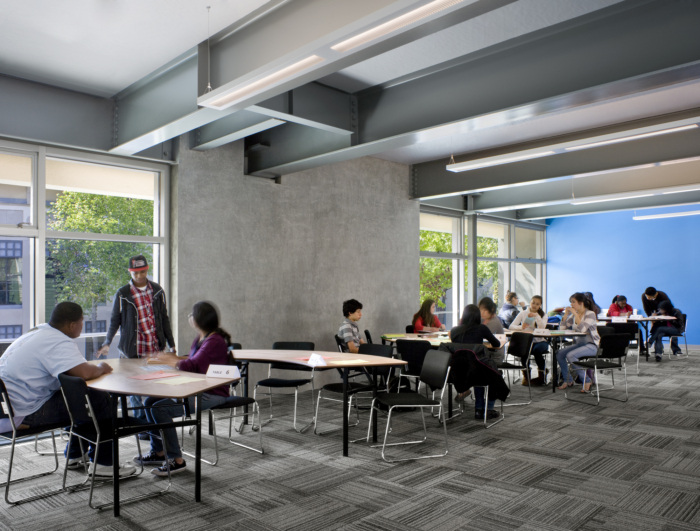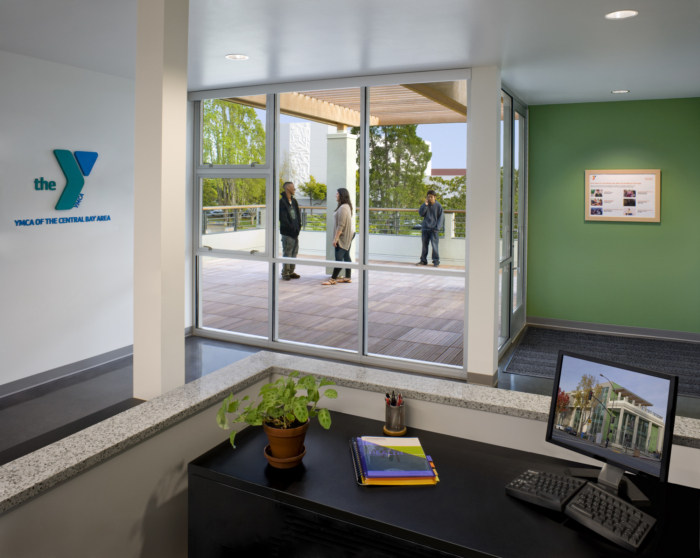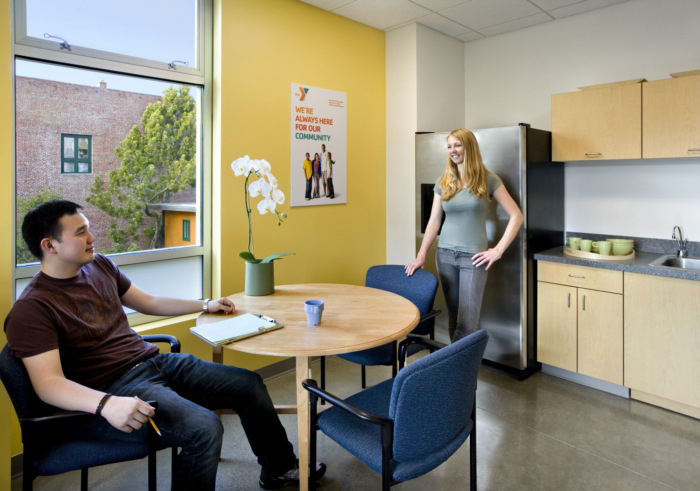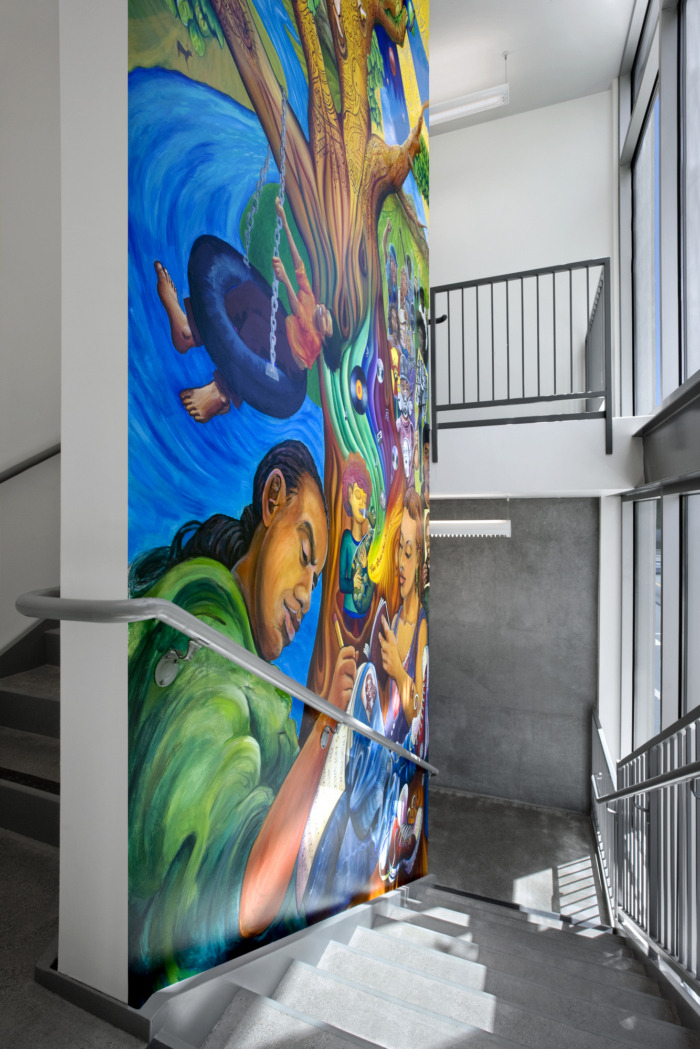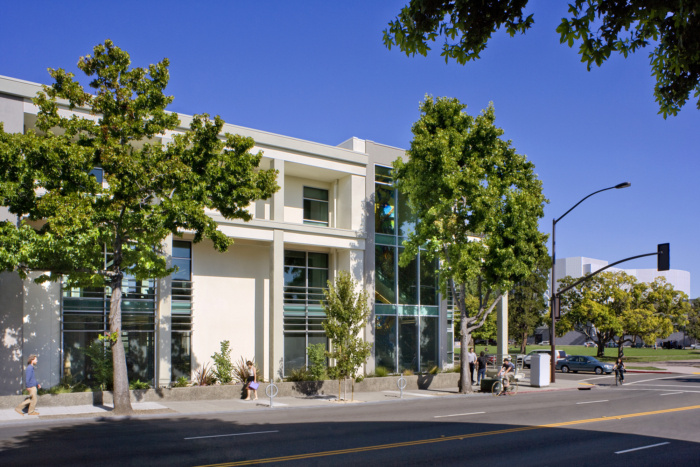Berkeley YMCA – PG&E Teen Center
Noll & Tam Architects converted an old concrete office building to the sustainable and functional Berkeley YMCA’s PG&E Teen Center located in Berkeley, California.
The YMCA of the Central Bay Area sought to establish a Teen Center in downtown Berkeley. When Pacific Gas & Electric donated a two-story, 8,000-square-foot decommissioned payment center across from Berkeley High School, it provided the ideal mix of opportunity for adaptive reuse. The design-build team transformed the 1964 concrete office building into a 13,500-square-foot, flexible, youth-centered space by opening it up with glazed storefronts, adding a new partial third story with roof deck, and creating a flexible interior. From its inception, the Teen Center project drew in partners and non-traditional resources. Working side-by-side with PG&E, the YMCA committed to making the project highly sustainable, while at the same time promoting inclusivity throughout the design and construction process.
The transformation from outdated utilitarian office building into a visually active and accessible community asset, was socially as well as architecturally appropriate for this important civic location. The renovation is intended to reflect a collaboration committed to a sustainable design approach. Bright colors reflect a youthful spirit. The design retains the architectural bones of the existing building, in particular the strong vertical columns and the proportions of its main public face on Center Street, while making the overall building more vibrant and colorful to reflect the youthful energy of the Teen Center function. A new third floor, added to house the YMCA Metro administrative offices, is set back from Center Street, creating space for a roof garden that overlooks Memorial Park.
The project was an intricate disassembly of a two-story concrete building. As in any design involving an existing structure, there were moments of discovery where conditions other than had been summarized emerged. One example of such a condition was that the tops of the existing walls were discovered to be sloped or at differing elevations. The solution was to horizontally saw-out the tops of walls to match heights in other parts of the building, using a wet track-saw. Since the design called for an ambitious amount of reuse involving teams working in very tight spaces, continuous conversation between the builders, the architects, and the structural engineer was necessary. The team worked to find solutions in a timely manner. Despite the complexity, the team was able to cut the owner’s contracted schedule from nineteen months to only ten. This allowed the Teen Center to open in time for the winter semester.
The design was developed through a collaborative process that involved the members of the YMCA’s Teen Task Force, to ensure that the youth viewpoint was incorporated. Teens recognized the bold significance of the structural steel and concrete as key elements of the structure. The project team intentionally avoided excess in terms of finishes, instead retaining a rough-edged “industrial” interior design aesthetic. This required our subcontractors to provide quality craftsmanship in finishing and polishing concrete, and plastering.
The YMCA actively engaged teens alongside highly knowledgeable real estate developers, project managers and program directors in all aspects of design and planning. This youth involvement helped ensure that the Center is teen-friendly and teen-focused, while also aesthetically pleasing for the larger community. A dedicated Teen Task Force made key project decisions and took active, substantive roles in the project, such as hiring the architect, collaboratively developing the building program and design, presenting to the Landmarks Preservation Commission, and hiring the contractor. Teens wrote Requests for Qualifications & Proposals, learned to conduct interviews, and took tours of the architectural firms. They were directly involved in creating an identity for their new place, and in determining how to express their vision.
For their participation, the teens earned a salary, paid for through a YMCA partnership with the Rotary Club. If they stayed on for a year, they received an additional financial educational award. The UC Berkeley Chancellor’s Community Partnership Fund awarded the Teen Center grants totaling over $1 million, and will continue to award grants annually through 2020. The grants support community service programs that enhance the economic, social or cultural well-being of Berkeley residents, and neighborhood-improvement projects that enhance the physical environment of the city’s neighborhoods. In addition, the rooftop garden at the top of the Teen Center is being funded and maintained by Berkeley High School students and Cal Corps volunteers.
The building exceeds California’s Title 24 Energy Standards by 29.9%, and the project achieved LEED-NC v2.2 Platinum certification through the United States Green Building Council.
Architect: Noll & Tam Architects
Contractor: Pankow Special Projects L.P
Photography: David Wakely Photography

